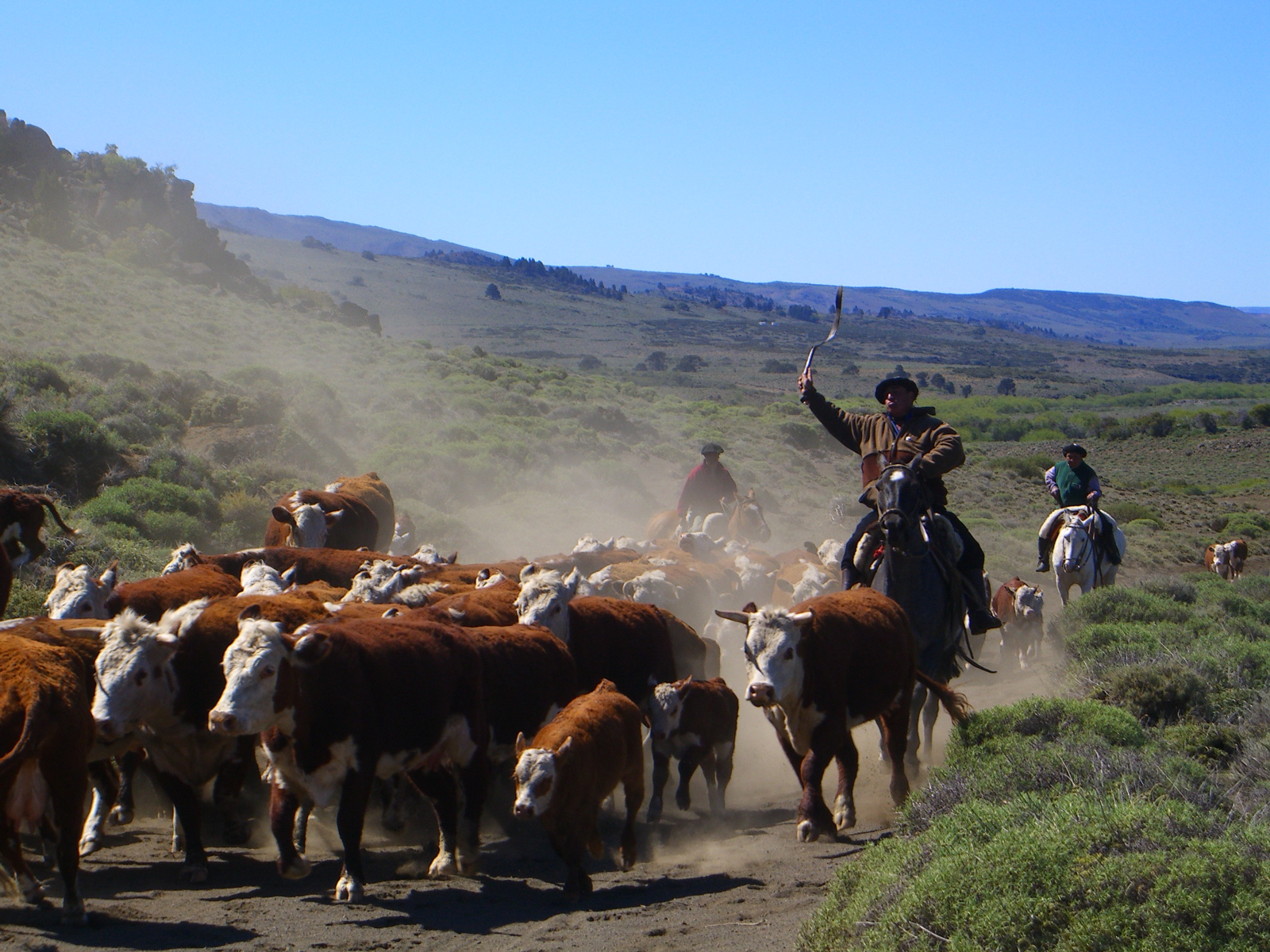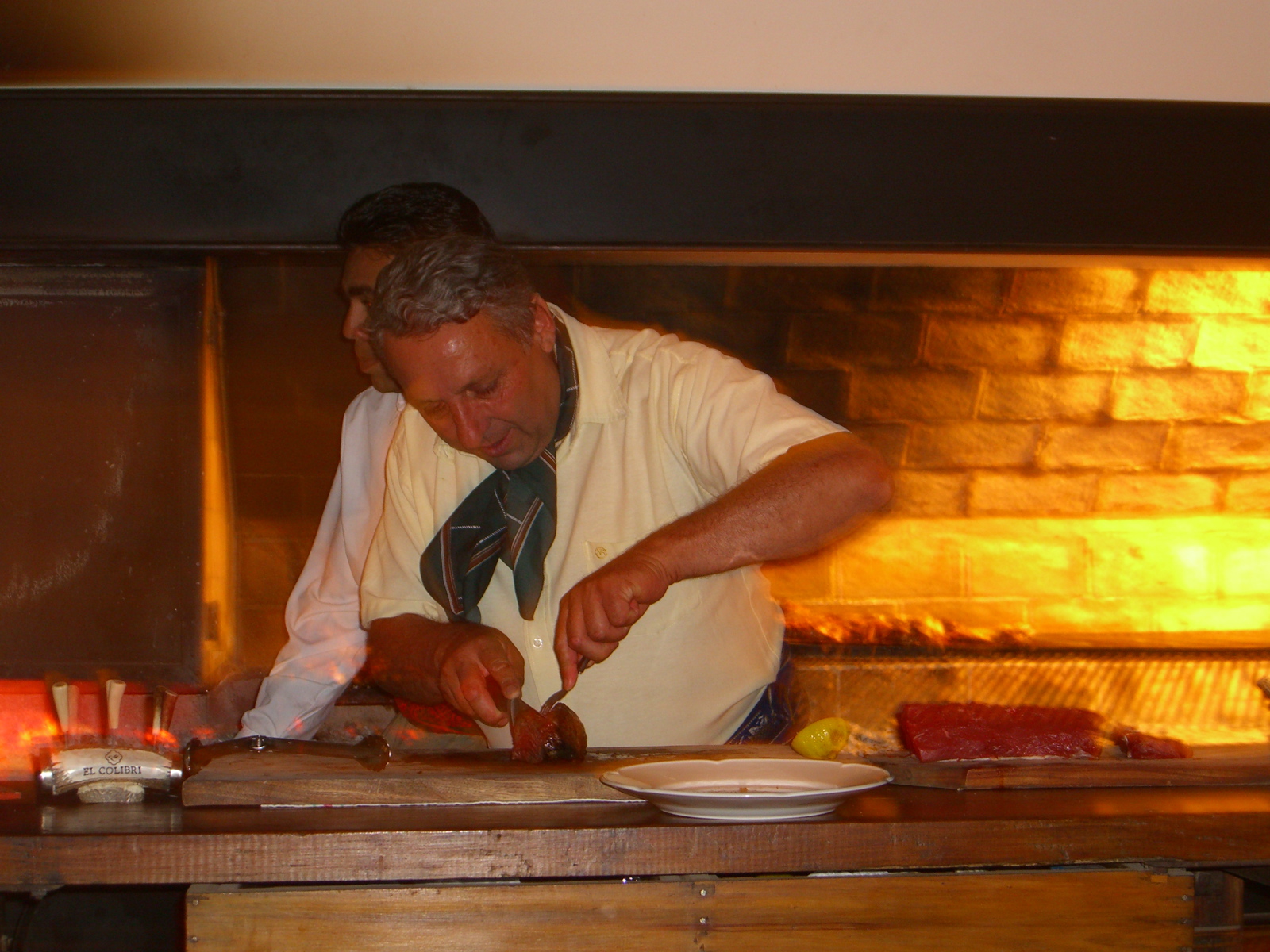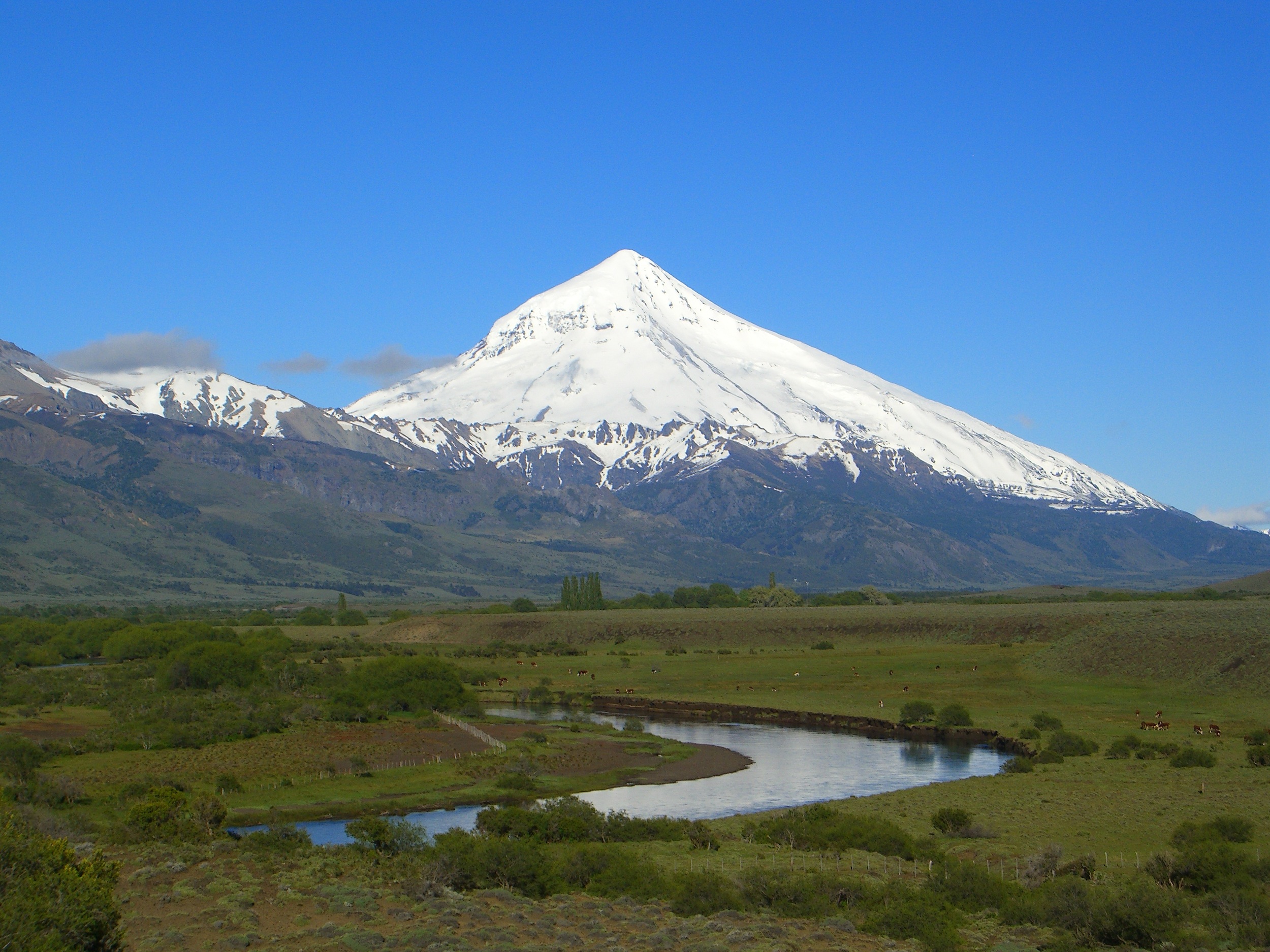Amazing Argentina: Doves, Trout, Tango & Polo
“The pastoral image
owes an equal debt
to Faulkner’s fiction
and Beethoven’s Sixth…
at least until the wings begin to stir.”
“The farmers call doves
La Plaga…. or plague,
a feathered tsunami that periodically crashes upon their crops, stripping
away any meager profit
in a fearless need to feed and breed.”
DOVES in FLIGHT
“The bird boys admire good wings shots and
say “tsa!” when a bird suddenly folds at full speed.”
Eared Dove
after three days and four cases of shells,
a pink and blue tattoo now radiates from my
armpit out onto my shoulder and pectoral
Hector Fusilado
Gaucho On the Road to Fields
H&H Outfitters
www.handhoutfitters.com
robert and andrew
We come to the dove blinds by way of a dusty dirt road that passes small, stuccoed farmhouses where sleeping hogs litter the front yard, horses sleep on their feet in poor corrals and cattle graze the thin spring grass that flourishes between the invasive Piquillin’s sharp thorns. Past the farms, the truck follows a rough track toward hills that are covered with Quebracho, Carob, Tala, Piquillin and Chañar trees and as we pass, the dust lifts in shades of rose and purple above Jesus Maria’s cultivated fields. The pastoral image owes an equal debt to Faulkner’s fiction and Beethoven’s Sixth…at least until the wings begin to stir. One flight feather quickly joins another until billions gather in a deep whir that quickly grows to approximate the distant drumming of a diesel generator. Estimated at between twenty and fifty million birds, Zenaida Auriculata is on the move.
robert & andrew
From the blind my son Robert and I watch fifty thousand birds lift out of the dense thickets and shimmer toward us. They come in waves, hundreds at a time, weaving like gray ribbons against the bright blue sky. The air glitters with color as thousands of pink breasts and pale blue wings reflect the morning light. A minute later the first singles flash by. The singles quickly join into pairs, squaring, then squaring again until the air vibrates with their numbers.
Botanists classify the country north of Cordoba as Espinal, a green/gray quilt that stitches croplands to secondary thorn scrub creating perfect habit for Argentina’s eared dove. Scattered across five million acres an estimated fifteen to twenty active nesting sites may each support a million or more birds. Depending on whether you’re a hunter or farmer the math is either amazing or depressing. A mated pair will lay two eggs with a fifty-five percent success ratio. Population numbers, however, aren’t dependent upon a single clutch. Fueled by an unlimited food base the birds convert stored fat to three hatches per year. Each subsequent generation will breed and lay less than four months after they fledge, and it is this amazing fecundity that fills the skies west of Jesus Maria.
Cathedral jesus maria
Widely recognized as one of the world’s avian biomasses, the numbers are so vast that even Argentina’s Fish and Game can’t keep an accurate count. While the U.S. anthropomorphizes Mourning Doves with everlasting love, Valentines and world peace, the Argentinean farmers exhibit a much more choleric response toward the flights that wash across their fields in the morning and evening.
The surrounding sorghum, wheat and millet fields supply eighty-five percent of the dove’s diet and evidence exists that, like honey bees, returning birds can accurately communicate the location of ripe grain fields, sunflowers or unplowed corn stubble. The farmers call doves La Plaga…. or plague, a feathered tsunami that periodically crashes upon their crops, stripping away any meager profit in a fearless need to feed and breed. The government once scattered strychnine-soaked grain around the roosts but evidence suggest that poisons had little effect on the numbers. The days when doves were officially listed as a pest, however, are long gone. With sixty outfitters and much of the local economy dependent upon the enormous populations, and hunters contributing an average $8,000 per trip, the eared dove now approximates a ten-peso note with wings.
wheat fields
Marcel Madera hands me a loaded 20 gauge Beretta 3901. The autoloader offers an elegantly machined antidote to the dove’s rapid wing beat and erratic flight. To keep the barrel from overheating, H&H Outfitters plugs the magazine. It now holds three in the spring-loaded tube, with one in the chamber. Despite the numbers, past time on target reminds me to focus on one dove and not lead the flock. The reward is tied to the swing, trigger pull and follow through that results in a clean kill. I pick the morning’s first bird and raise the shotgun. Before I can pull the trigger, it folds. I pick another and start to swing, and then it too folds. “Stop that,” I tell Robert.
“Stop what,” he asks, folding another dove, then another before his autoloader runs dry and he hands it to Andreas Sanchez who trades it for Robert’s backup Beretta.
On our first afternoon in the field three days before, Andreas proved to be as calm as a Zen Buddhist. Robert hadn’t fired a shotgun in over a year and when he repeatedly missed, Andreas encouraged him to keep his cheek on the stock, his eyes open, to swing through the bird and squeeze, not jerk the trigger. Soon yellow shell cases littered the ground.
Piquillin Forests, High Flying Doves
“You were behind… You must swing a little faster, more in front.” Andreas quietly advised him. The bird boys admire good wings shots and say “tsa!” when a bird suddenly folds at full speed. It is a verbal form of applause and to earn that praise, we avoid shooting the slow or close birds and instead reach for the high, fast flyers.
Saddled with twenty-two units of pre-med and facing midterms at the University of Nevada, Reno, Robert shouldn’t have come to Argentina. Instead, he would not be denied and rescheduled tests, wrote papers in advance, crowded labs together and lived on four hours of sleep a night for two weeks. One instructor assigned him a fifteen-page paper on ethics; the choice of subject was left open.
Fast Birds, Short Clips, Patient Instructor
“How does the ethics of shooting doves sound?” he inquired following our first day in the field.
“I thought he was a vegetarian and a pacifist?” I reminded him.
“He is.”
“In that case no matter how well it’s defended, I can’t see how the Ethics of Dove hunting will score more than a C-.”
The air is filled with doves but the vast majority dodge, dip and bank around us. Some shooters claim the movement of the gun flares the birds and riding a trailing wind with their wings swept into an F-15’s delta the doves are blindingly fast and nearly impossible to hit. Yet the best shooters travel to Argentina for exactly this challenge and in the distance I can see fast moving birds tumble in an explosion of feathers or tip one wing and fly into the ground. In contrast to the popular wisdom, this is not a slaughter and stories abound of shooters who never get it…never learn to swing, or lead and though they pick up the occasional singles and pairs, shooting U.S. dove limits is not sufficient reason to fly to Argentina.
Empty Cases
The devil lives in the details. One case of shells, five hundred rounds, if you’re averaging a weak fifty percent you will still kill 250 birds a day. The total may sound excessive, but that number is tiny compared to the 7600 an Irish gunner shot on his way to an Argentine record. With the help of three bird boys, five autoloaders and four shells in a gun, he took eleven hours to shoot twenty-one cases of #8s for a success ratio of 82%.
Short of sewing a bulletproof Kevlar shield into his jacket, I still can’t see how he did it. After three days and four cases of shells, a pink and blue tattoo now radiates from my armpit out onto my shoulder and pectoral. Robert’s cheek is bruised from pressing it against the stock but his average has soared. Flights of Zenaida Auriculata now enter his forty-yard range at their own peril. During the past two days, Robert’s blazing reactions and perfect eyesight have begun to beat in synch and like a blued metronome, his barrel swings from one bird to the next, sending both spiraling into dry grass.
Scattered within the flights, parrots that were introduced by a home sick Brazilian, race above the blind. The guides will shoot both if they can…but the parrots are faster and wiser than the doves and stay high out of range, or appear and disappear with the iridescent green flash of a gaucho’s blade.
I am not immune to the loss of one crippled bird. They are not simply living targets but a tradition that my father handed to me with an old Model 31 Remington pump. I, in turn, passed a love of hunting onto my sons with auto loading Brownings. Robert was weaned on ducks, blue grouse, chukar and doves and has yet to question the rightness of killing and eating wild birds We try to stone each other’s cripples and are moderately successful in bringing down the lightly hit birds.
Eared doves nest in the local Algarroba trees. Resembling a fragrant European carob tree whose reddish brown wood is used for furniture, the Algarroba Blanco’s thorny branches droop nearly to the ground, forming a solid impenetrable carapace through which the predators cannot pass.
The local red-backed hawk called Aguilucho Comun, the Chimango Caracara and eagles have grown lazy in the years since the dove hunters first arrived and now spiral in at the first gunshots. They have learned there is no need to risk the thorns for a barely fledged squab when the hills are littered with adult carcasses. Showing little regard for the steady reports, an eagle settles into an adjacent Algarroba where it swiftly dismembers a still warm dove.
At the end of the day the outfitters collect and give away all the carcasses they can, but the numbers are daunting. Though the eared dove can be barbecued, added to sauces and mixed with pasta, a steady diet of breasts and backs eventually grows tedious. Even so we stop at the Hector Fusilado family compound.
Scattered around a faded concrete-block house with a dirt front yard, the Fusilado children, study us with wonder. It is Sunday, clearly a day to party, and the men accept the doves with slightly out of focus nod. What interests them more than the birds is Dan Borris’ digital camera and they press together for a photo, the men grinning broadly, the children awestruck by the wealthy gringos, all but one wife too shy to join this rare family portrait.
Hector Fusilado ready to barbecue
The story of Alex and Zeke Hayes, H&H Outfitters is a case of being at the right place at the right time. Alex Hayes’ college roommate’s father owned the San Huberto Fishing Lodge in Patagonia and asked Alex if he’d be interested in working as a guide during the summer. Alex signed on for the next three years and then, when he’d graduated, accepted a job guiding duck hunters near Tucuman in Northern Argentina. At roughly the same time, Colombia’s drug cartels’ public shootouts spooked American dove hunters whose numbers crashed. Trek Safaris asked Alex if he knew of anywhere in Argentina that might take up the slack. Alex had been born and raised in Cordoba and suspected the nearby village of Jesus Maria’s resident dove numbers could support a guide service. What he couldn’t predict was Cordoba Province’s rapid shift from cattle grazing to raising wheat, corn, sorghum and sunflowers. Dove Field Argentina
By most accounts, “nuclear explosion” falls short of the subsequent growth in dove numbers. Supported by Trek Safari’s need for an alternative hunting site, Hayes scouted the birds, built the blinds and established a dependable source for 20 gauge eight shot. During that first season, he housed a total of 100 clients in a Jesus Maria hotel, fed them at local restaurants and secured access from local farmers who couldn’t believe the gringos would waste valuable shot shells on worthless doves.
Alex admits, “I thought the hunting would last, three, maybe four years at most.” Today he acknowledges that he grossly underestimated both the bird numbers and U.S. demand. When the business rapidly grew too big for Alex to handle alone, he offered a share to his brother Zeke who was building spec homes in the U.S. Zeke now handles the publicity and day-to-day operations for H&H. In fifteen years, H&H has parlayed ammo sales, lodging, food and accessories into a multi-million dollar a year business. The Hayes brothers now own 4 lodges and thousands of acres of prime dove roosting areas all of which are supported by 1200 to 1600 hunters per year. While Alex values the doves, he notes that they resemble rats, or cockroaches. “The populations will grow until they exhaust their food base.” He says. “In my opinion, hunting has absolutely no effect on them! In fact they’re more numerous now than at any time in the past!”
In the decade and a half since Alex Hayes pioneered Cordoba’s dove shooting, the number of outfitters has grown from one to sixty and the number of hunters from five to five thousand. One predictable side effect is that competition is now fierce for prime fields that were once leased for little or no charge. Over time H&H purchased or leased 20,000 acres of prime dove habitat. With 90% of Cordoba’s flyways under H&H’s control the Hayes brother’s future seems secure. Alex admits, however, that some of their leased land is under intense pressure from competitors who will take a smaller profit margin to maintain the flow of hunters.








